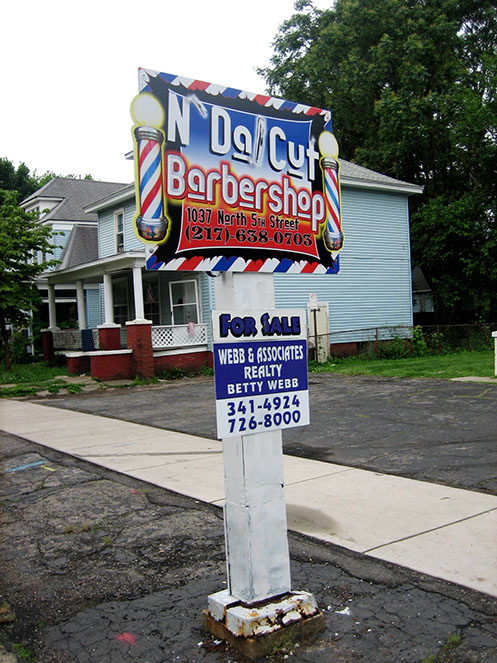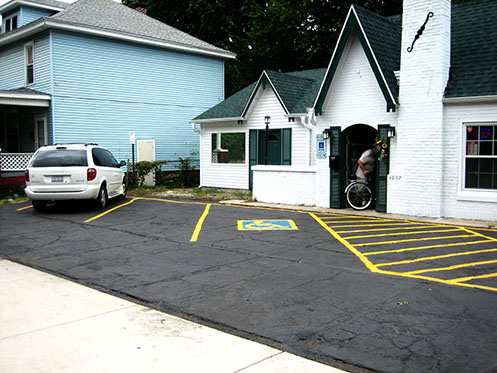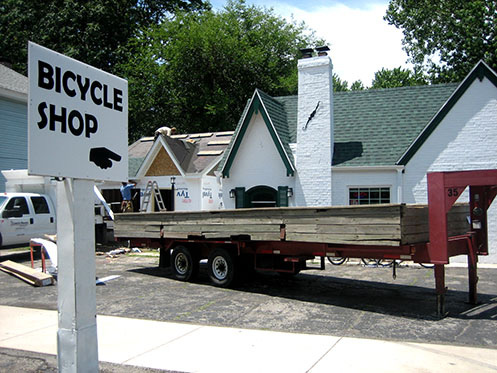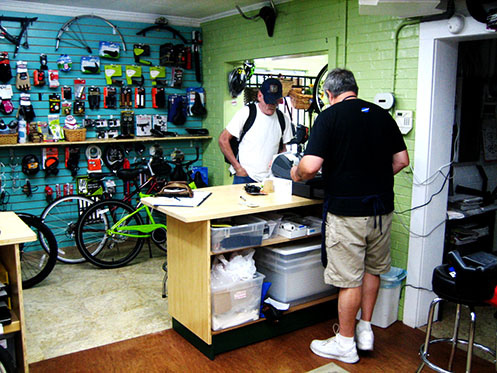Social Memory and the Power
of Adaptive Re-Use
Keith A. Sculle
Landscape studies of late have commonly hewed to matters of social memory, not elite aesthetic judgment about their positive contribution nor their debasement of life. Rather, how do the people who pass through but especially those who live in a particular landscape see it and feel about it? Architecture that has come to be associated with the commercial strip remains largely a category for judgment. It is not a pragmatic search about what it enables its occupants, who are often less affluent, to achieve. Fifteen years ago, Timothy Davis (1997) beneficently and broad-mindedly as a citizen, and as a prescient scholar, called for looking at how people adapted the Strip and its individual buildings came into play for other than their original purposes. But, he cautioned: beware of nostalgic glorification! Darrell Norris and Brian Coffey already had begun surveying adaptively re-used gasoline stations along transcontinental US 20 for scholarly purposes (Norris 1995; Coffey and Norris 2000).
Gasoline stations may well be among the most adaptable building types now categorized as Strip architecture. Their impacts, however, do not necessarily have to be degrading. Before the seemingly pervasive domain of the automotive Strip, gasoline stations were often designed to blend into residential neighborhoods, to be a “good neighbor,” and within convenient physical reach of car owners who did not want to refuel at long distances from home. Cottage style designs of big and small petroleum marketers alike became the common means for many to find a place welcomed within prestigious residential neighborhoods of the early-twentieth century. In 1927 and 1928, Phillips 66 and Pure Oil respectively pioneered big oil company sales from standardized cottage-style stations. Social memory of quaint architecture became an asset manipulated for profit.
It was a “story book building.” Some in the neighborhood call it the “Santa Claus House,” perhaps for the building’s white mass which the occupant before LaBonte trimmed in red. Robert LaBonte remembers in this favorable aura the former service station, which became a cleaners, then a real estate office, and lastly a men’s barber, at 1037 N. Fifth Street in Springfield, Illinois. LaBonte remembered it from the time in the early 1970s when he drove by it daily on the way to and from high school and even earlier when he often passed it coming back from the Illinois State Fair. In that building, now under his ownership, LaBonte operates a bicycle sales and repair shop. He opened there on May 1, 2012.
The cottage had fallen into minimal use and disrepair since it first opened in 1932 (Figure 1). Immediately before LeBonte's revitalization of the building, a man's barber shop had operated out of the building. Rats had eaten through the floor and left their excrement, LaBonte recalls (Figure 2).

Figure 1. The real estate office in decline (2008), after nearly 50 years in business at the site.

Figure 2. The men’s barber shop for sale, 2010.
LaBonte’s Bicycle Doctor contributes to the gradual dawn of the neighborhood into a new positive social light. Its position near the northern edge of the Enos Park neighborhood puts it close to an early commercial constellation. By no means a patrician neighborhood, it was a desirable location of mixed upper and working class residents. Since its founding in 1989, the Enos Park Neighborhood Improvement Association considers that significant changes for the better have occurred in the neighborhood. Although not necessarily seeking praise for his businesses’ contribution, LaBonte notes that it is one of the neighborhood’s three businesses (Figure 3) and that he helped found the nearby Springfield Bicycle Kitchen. The latter repairs donated bikes to low-income residents. Socially aware, LaBonte is also an environmentally aware entrepreneur. He installed solar panels on the back of the former station for assisted electrical energy. Springfield’s weekly newspaper singled out this feature alone to report about the bicycle shop’s part in a sustainable landscape (Illinois Times 2012). As to urban ambience, the city’s daily newspaper recently reported at length on the problems unoccupied gasoline stations represent.

Figure 3. In new business, 2012.
LaBonte calculates that the building’s assets outweigh its shortcomings. It is on a busy street, was cheap to purchase — although it has cost about $30,000 to improve — and believes the neighborhood welcomes his business. He has added a building beside the front facade, in a style consistent with the original building (Figure 4), to add storage space lacking in the original building (about 800 square feet) (Figure 5).

Figure 4. The new addition under construction beside the original building, 2012.

Figure 5. The garage area (not high enough for a lift) adapted to a work room, looking forward to the sales counter, 2012.
How people remember a specific building and associate it with a broader building type can help alter a landscape. Will this adaptively re-used gasoline station do this in Springfield, Illinois, that is, help create a new image for a neighborhood with historic residential architecture? Will adaptive re-use help achieve more than the preservation of the building itself, the rationale most commonly advanced for reuse? Will stakeholders eventually include people beyond the neighborhood? How ironic that a gas station building once inserted into a residential neighborhood by disguise as a domestic ally should now face the prospect of helping revive that residential neighborhood and housing a shop for bicycles, which preceded the automobile in extending mass mobility.
References
Coffey, Brian and Darrell Norris. 2000. “The Persistence of Use and Adaptive Reuse of Gas Stations: An Example from Western New York” Material Culture 32: 2, 43-54.
Davis, Timothy. 1997. “Chapter 6. The Miracle Mile Revisited: Recycling, Renovation, and Simulation along the Commercial Strip.” In Exploring Everyday Landscapes: Perspectives in Vernacular Architecture VII. Knoxville: University of Tennessee Press, 93-114.
Illinois Times. 2012. Cap City, “Solar Springfield.” July 5. http://www.illinoistimescom/gyrobase. Last accessed July 20, 2012.
LaBonte, Robert. 2012. Interview by author, Springfield, IL, July 20.
Landis, Tim. 2012. “Perking up Enos Park,” The State Journal-Register. July 1. pp. 23 and 25.
Morris, Natalie. 2012. “Service Station Standstill,” The State Journal-Register. September 9. pp. P1 and P4.
Norris, Darrell. 1995. “Federal Highway 20: The Last Transcontinental,” The Great Lakes Geographer 2: 87-96.
Springfield Bicycle Doctor. 2012. http://spfldbicycledoc.com/index.php/component/content/ ?id=7. Last accessed July 24, 2012.
Springfield, Illinois, City Directories, 1928-1962.
Author Biography
Keith A. Sculle, long concerned with the automotive roadside business landscape, takes adaptive re-use to his study agenda. He is the retired Head, Research and Education, Illinois Historic Preservation Agency.

